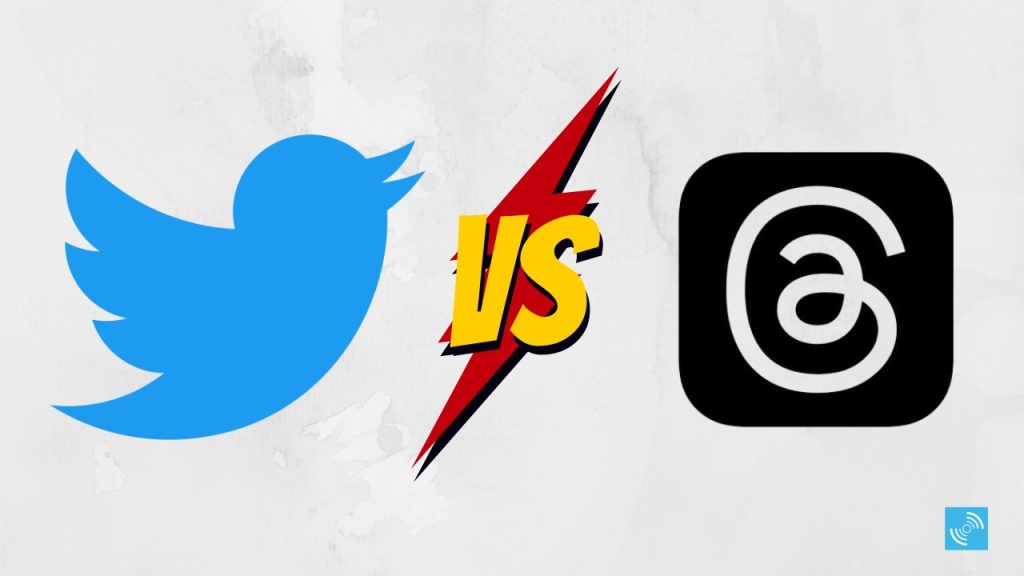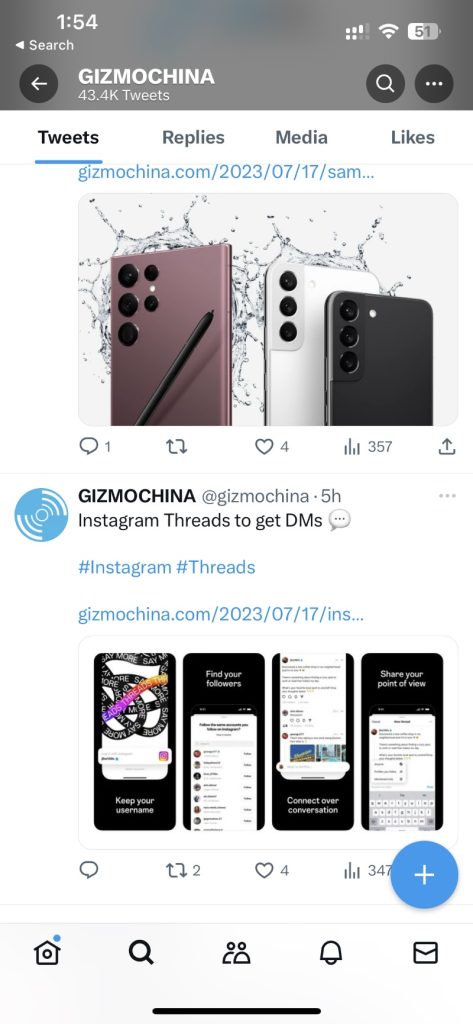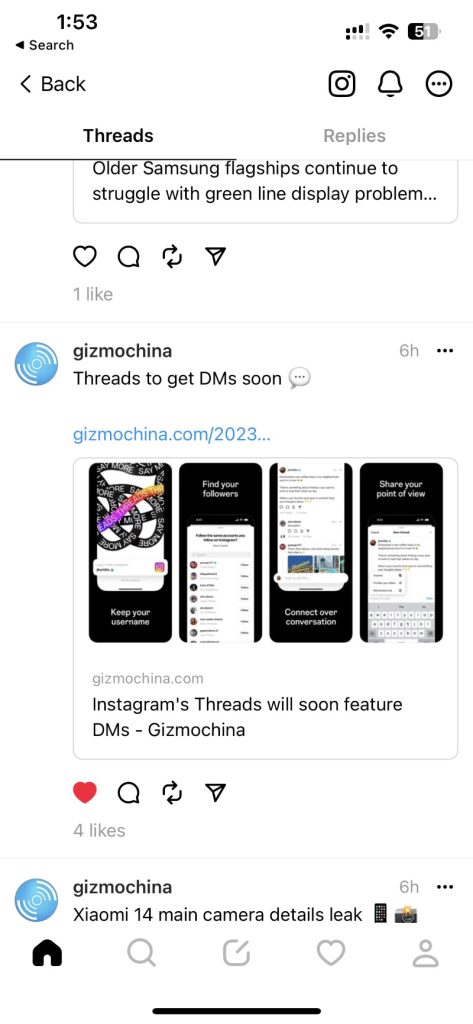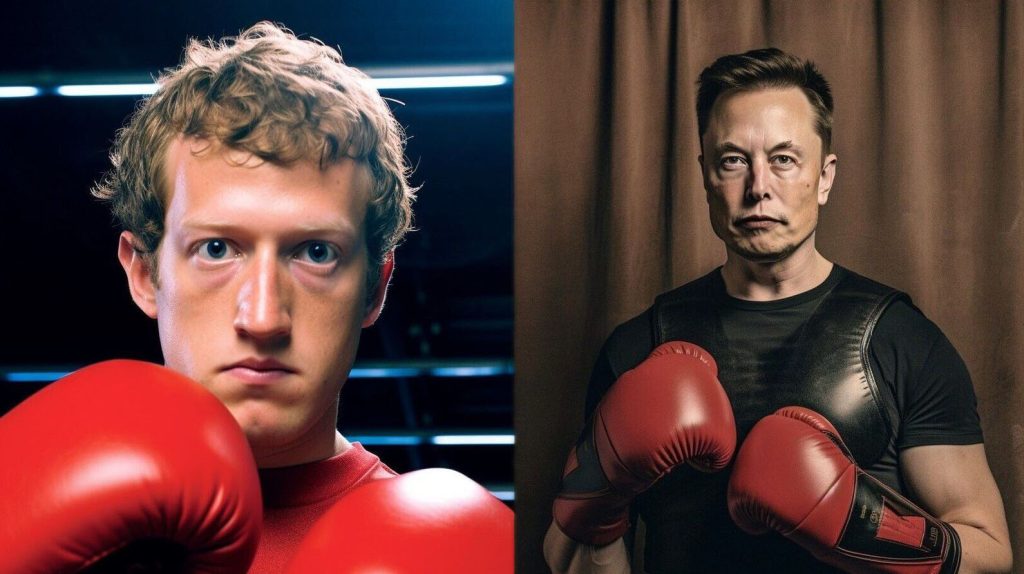The social media landscape recently welcomed a new competitor from an existing media giant Meta called the Threads. At a time when Twitter has pivoted to a more aggressive monetization strategy, including paywalls, Threads has rapidly gained traction, with 100 million users signing up on its platform in its first few days.
The question that naturally arises is: What unique offerings does Threads bring to the table that users are contemplating a switch from Twitter?
Let’s delve into a fundamental comparison to gain better insights.

Design
Twitter’s minimalist design, primarily text-based, with a linear feed, has been its signature look for years. Conversely, Threads embraces a more visual approach with a card layout reminiscent of Instagram stories, which makes it an excellent platform for sharing links and news stories, providing a more immersive experience.


Features
Twitter, with its mature platform, offers a plethora of features, including trending topics, direct messaging, robust search capabilities, and support for multiple languages. Twitter also gives users the option to draft and save posts for later. There’s also the added advantage of an intricate thread system that lets users easily engage in complex conversations.
On the flip side, Threads, still in its infancy, has a more pared-down feature set. Its main offering revolves around text-based posts with a 500-character limit, quite a leap from Twitter’s 280. Notably missing, however, are functionalities like direct messaging, discovery pages, and support for hashtags. Also, the ability to save drafts and edit posts after publishing is absent.
But Threads isn’t sitting idle; Meta executives have assured users that new features are underway. The roadmap reportedly includes post-editing, multi-language support, and improved desktop functionality. Thus, even though Threads is currently less feature-rich compared to Twitter, it is poised to close the gap soon. Also, Zuckerberg recently said that the app will remain ad-free until it hits 1 billion users.
Algorithm
Twitter employs a complex algorithm that surfaces tweets based on user preferences and engagement. It provides two feed options: one curated by user interests and the other based on user-followed accounts. Threads, on the other hand, adopts a simpler feed approach where posts from all users are visible, regardless of whether a user follows an account or not.
User Demographics
Threads’ initial user base seems to be skewed towards Instagram’s audience, likely due to the seamless integration with the popular photo-sharing app. Twitter, with its broader demographic, appeals to a more diverse audience, including journalists, politicians, and celebrities.
Verification
While Twitter’s controversial pay-for-verification model has drawn criticism, Threads has retained a more traditional verification process. Verified Instagram accounts automatically receive their blue badge on Threads, offering a more trusted verification system.
To better understand the basic in-app differences we have created this chart. Please take a look.
| Feature | Threads | |
|---|---|---|
| Design | Minimalist, text-based | Card layout, visually appealing |
| Character Limit | 280 (standard), 25,000 (Twitter Blue) | 500 |
| Video Limit | 2 minutes 20 seconds (standard), Unlimited (Twitter Blue) | 5 minutes |
| Post Drafts | Available | Currently Unavailable |
| Direct Messaging | Available | Currently Unavailable |
| Algorithmic Feed | Yes (two options: based on user interests and followed accounts) | No (all users’ posts visible) |
| Verification | Available for purchase | Transferred from verified Instagram accounts |
| Ads | Yes | Currently Ad-free |
Can Threads Take on Twitter in the Long Run?
Predicting the winner in this ongoing social media duel is quite premature at this stage. Each platform holds its unique strengths. Despite facing criticism over its paywall policy and alleged toxicity, Twitter still boasts a solid base of loyal users and a rich array of features. On the other hand, Threads, though still evolving, benefits from the massive leverage of Instagram’s enormous user base and Meta’s technological expertise.

This face-off could be perceived as a clash of the titans: Mark Zuckerberg of Meta versus Elon Musk of Twitter. Both are widely recognized for their path-breaking innovations and cutthroat competitiveness.
To conclude, the ongoing rivalry between Threads and Twitter offers an interesting insight into how social media platforms are evolving to cater to a diverse array of user preferences and experiences. Each platform provides unique benefits to its users, and the ultimate choice rests on individual usage habits and preferences. As the social media landscape continues to evolve, we can anticipate more exciting developments in the future.
From my perspective, so far, Threads has emerged as a much calmer space compared to Twitter, which often resembles a battlefield for keyboard warriors. It’s too early to forecast the trajectory Threads will take. A clearer picture will emerge as more users start interacting and creating content on the platform.
As for Twitter, it is likely to remain a vital player in the social media landscape, provided it doesn’t make any strategic missteps. Traditionally, Twitter has been the go-to platform for breaking news, important updates, and brand engagement. Hence, in my opinion, both networks can coexist, each catering to unique audience segments and purposes.
RELATED:
- My experience with the Motorola Razr 40 Ultra
- Reno 10 Pro Plus pushes Oppo to premium segment in India
- Xiaomi Smart Air Purifier 4 Review: Affordable, Elegant, and Powerful
- Motorola Razr 40 Ultra vs Razr 40: Specs Comparison
- Motorola Razr 40 Ultra vs Samsung Galaxy Z Flip4: Specs Comparison







